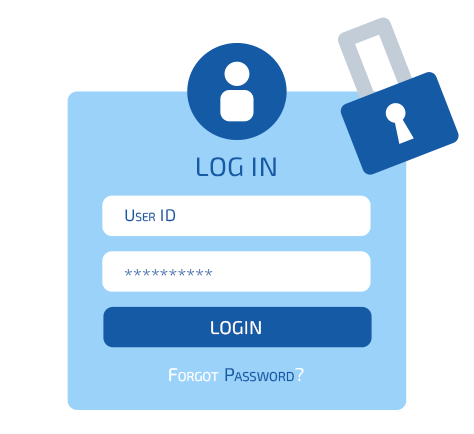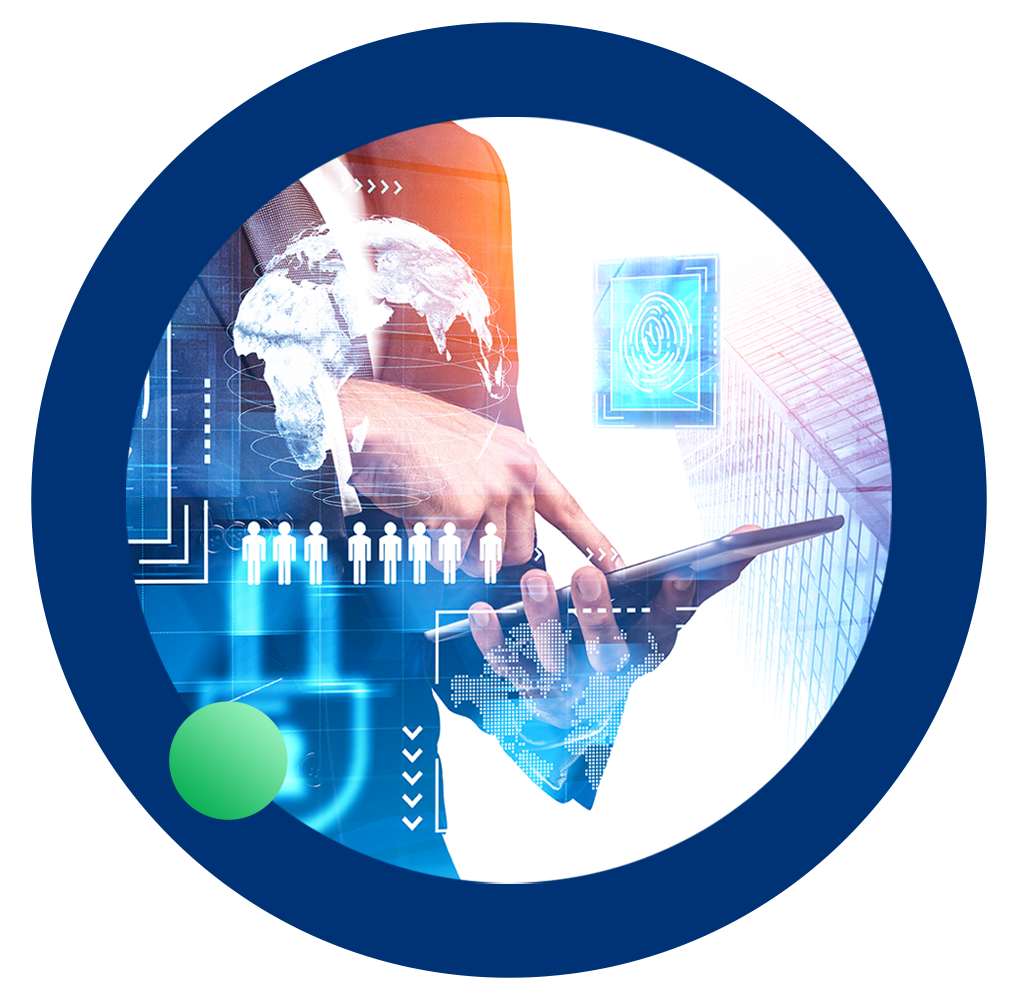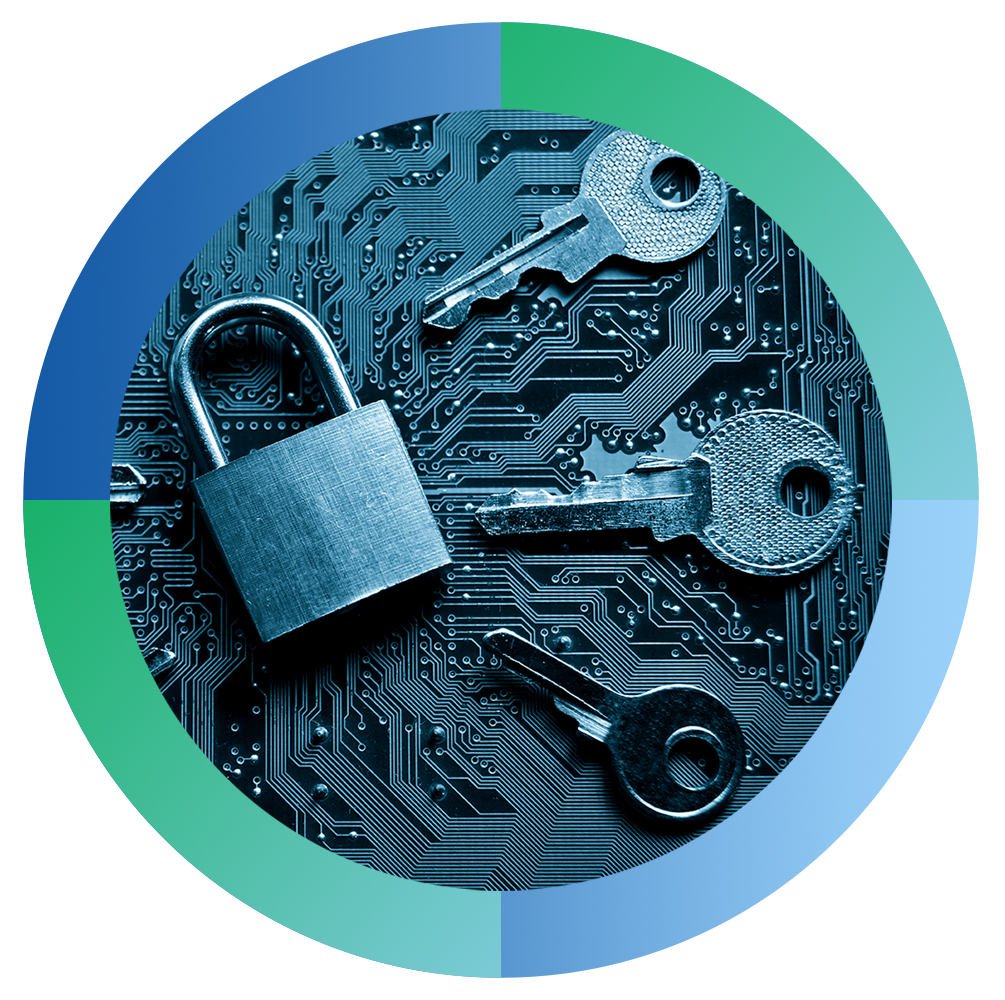Protect enterprise systems and applications from unauthorized access
Manage access rights to corporate information with ease and confidence
Increase the security levels of corporate systems by validating the identity of users who access them
Improve the user experience through Single-Sign-On


Identity and access management systems
As identity theft increases, so does the possibility of unauthorized access to users’ data.
Data breaches due to unauthorized access are more likely to be caused by the hacking of weak passwords, especially when employees use the same password for multiple levels of security than by security problems in any of the systems used by the organization.
Stealing passwords is easier than ever. A hacker can crack a regular four-letter, two-digit password in less than a second.
That is why a stable Identity and Access Management (IAM) process is an important part of any information security management strategy. This is especially important in cases where the business must protect not only its own corporate data but also large amounts of sensitive customer data.

Identity and access management systems add an extra layer of security to the network. Managers across the company can control which groups of employees have access to specific applications.
Modern IAM systems also make it easier to manage and authenticate users through Single-Sign-On (SSO) application access services, helping to prevent unauthorized access to systems. SSO is a solution that gives the user single access to multiple applications, portals, and systems by entering only one username and one password for sign-in authentication.
The two solutions can be used separately but their seamless integration helps create one enhanced security platform.


Key benefits of IAM
How do we validate user identities in such a way that protects the organization, but at the same time eases the access process so that we don’t unduly burden users?
Identity and access management solves the following problems:
Too many teams are involved in user administration, resulting in high administrative costs.
Accounts that are created by staff who have unauthorized access rights to the system.
A Lack of standardized credentials results in multiple accounts being created by the same user.
Different identification policies between multiple groups.
Poorly defined and documented systems with missing audit trails.
Redundant or incorrect information that does not properly identify directories and identities.

How does IAM work?
Identity and Access Management, or IAM, defines and manages user identities and access permissions. Users can be customers (customer identity management) and employees (employee identity management).
IAM refers to the framework of enterprise policies, processes, and technology solutions that support the management of digital identification, authentication, and authorization of access to organizations’ systems. It allows IT teams to manage users’ (employees’ and customers’) access to critical information using methods such as role-based access control. With IAM technologies, organizations can ensure that the user is the one they claim to be (authentication) and that users only have access to the applications and resources they are authorized to use (authorization).
An effective IAM process requires every role (including those related to system administration) to be defined in terms of competence, authority and responsibility so that appropriate levels of access can be granted. Based on the “must-have” principle, this allows users to perform specific tasks such as viewing, creating or modifying files. Other types of permissions may include the ability to access personnel data and make changes to processes or other administrative systems.

Single-Sign-On
Single-Sign-On is becoming an increasingly necessary method of identification and is an important element of any comprehensive security strategy. It allows users to identify themselves to the IT infrastructure without having to log in individually to each application, without compromising security.
Simplifying the login process facilitates the workflow as it adds a level of security by reducing the likelihood of error. For example, if a user typically accesses four applications during a work session, going through four routine procedures multiplies the possibility of errors and takes time. The more usernames and passwords are used, the greater risk of writing them to external media, often on paper or on the phone, which increases the risk of unauthorized access.

Advantages of SSO identification
Increases security levels
When users only need to remember one password for multiple applications, they are more likely to create a stronger (harder to guess/break) password and less likely to write it down. These practices reduce the risk of password theft. A separate layer of protection can be added with techniques such as two-factor authentication (2FA) or multi-factor authentication (MFA).
Improves user experience
Improved user experience is also a valuable benefit of SSO. Since repeat logins are no longer necessary, users can enjoy a modern digital experience that leads to increased customer loyalty and higher conversion rates, as well as higher employee satisfaction.
Reduces security risks for your customers, suppliers and partners
SSO protects vulnerable connections between partner companies.
In the design and implementation of identity and access management systems, we partner with world leaders in the field, combining state-of-the-art technology with our expertise.

 Български
Български